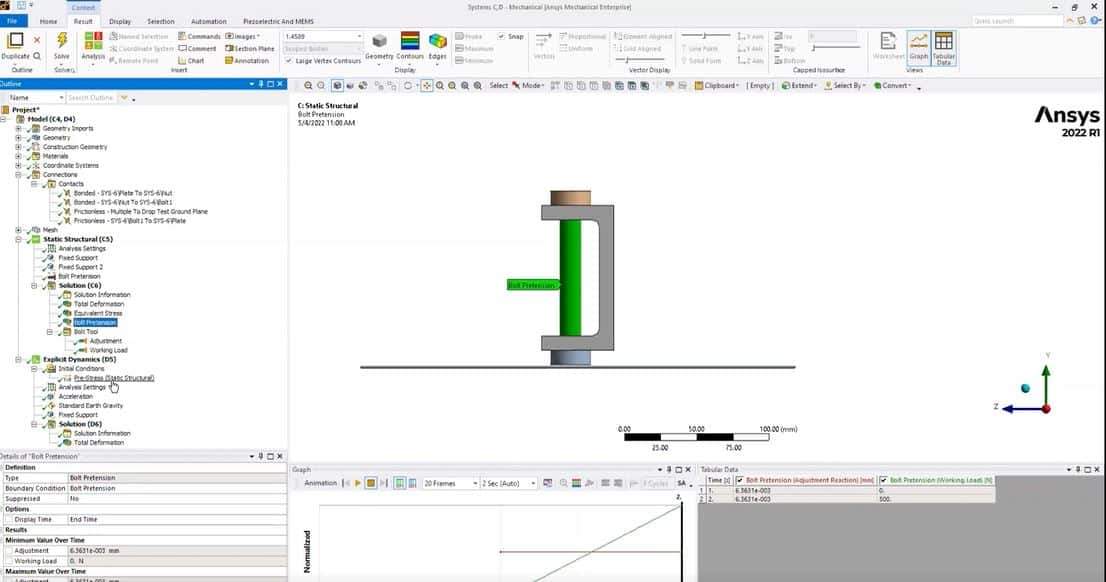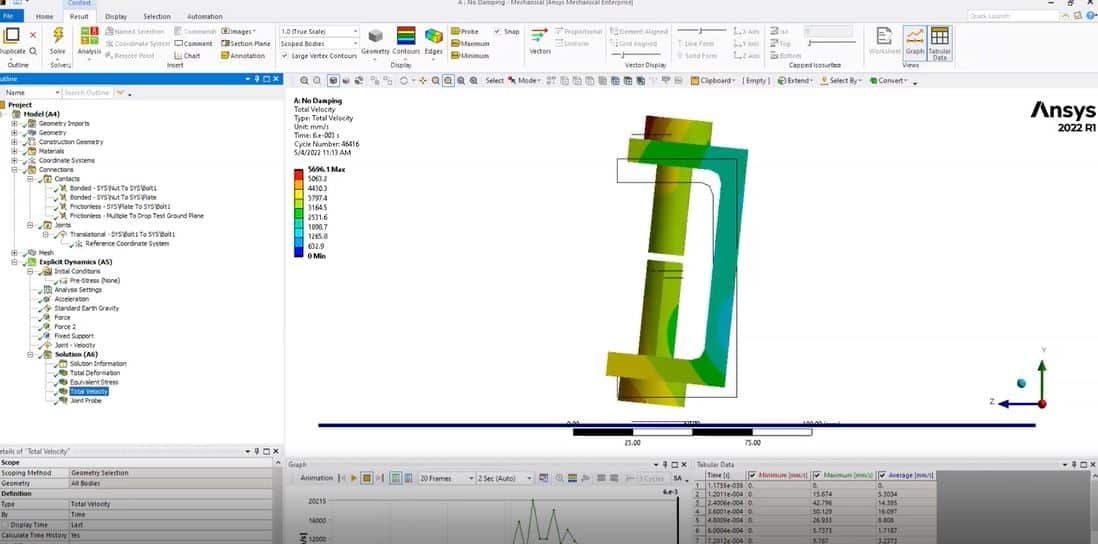Description:
The quick-hitting, 15-minute webinar will provide an overview of methods to perform a bolt pre-tension analysis in Ansys Explicit Dynamics before conducting the subsequent dynamic analysis.
The methods will be discussed in detail to describe the steps and limitations coupled with a demonstration in an example model.
Want to learn more about Ansys Explicit Dynamics?
Check out this training course | Ansys FEA 301: Ansys Explicit Dynamics Introductory Training Course


What does Ansys’ Explicit Dynamics mean?
Two different temporal integration techniques are referred to as “Implicit” and “Explicit” while performing dynamic simulations. For simulations involving: Shock wave propagation – Large deformations and strains – Explicit time integration is more precise and effective.
Moreover, for simulations involving: Complex contact – Fragmentation – Non-linear buckling – Non-linear material behavior tests for drops, impacts, and penetration are typical uses. Long before a structure is manufactured, analytical tools from ANSYS Explicit Dynamics can help model structural performance.
Short-duration, large-strain, large-deformation, fracture, full material failure, and structural issues with complicated contact interactions can all be solved with ANSYS explicit dynamics analysis software. This includes Performing Bolt Pre-Tension Analysis, which is covered in the accompanied webinar.

Techniques for carrying out Explicit Dynamics Simulations
A technique for time integration employed by the analysis system for explicit dynamics. Its name stems from the fact that the technique uses explicit data to determine the response at the moment. The next step after successfully meshing the body is to specify the beginning conditions or boundary conditions. To complete the setup, at least one initial condition must be met.
Once the initial circumstances (initial velocity and angular velocity) have been established, the analysis setting must be maintained in accordance with the problem’s requirements. Time steps have to be established explicitly in the analysis setting. The time required for a solution relies on the time steps.
Reference time steps/sequences include:
- The initial time step
- The minimum time step
- The maximum time step
- The time step safety factor
The standard earth gravity is also considered in drop tests.
ANSYS Mechanical Enterprise-Level License | Features & Utility
Please note that ANSYS Explicit Dynamics is only available as part of the ANSYS Mechanical Enterprise-level license and cannot be purchased separately.
- It analyzes transient structural events using the Autodyn solver within the default ANSYS Mechanical interface.
- It is employed to simulate failure, buckling, impact, and drops.
- Seamlessly performing advanced bolt pre-tension analysis’ in Ansys and modeling of bolt threads
- Additionally, it includes highly nonlinear quasi-static simulations that would be difficult for implicit APDL-based solvers to converge.
- The Explicit Dynamics interface in Mechanical is available to users with an Autodyn level license as a way to preprocess their structural geometry.

